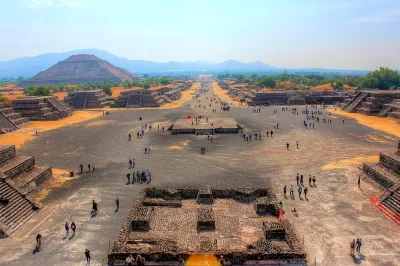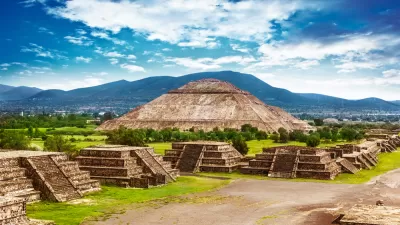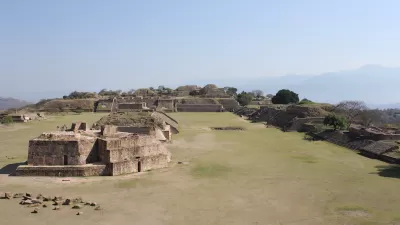Scientists from the Santa Fe Institute have discovered basic patterns underlying the way cities have always grown. The mechanics of "urban scaling" may have something fundamental to tell us about how large settlements evolve.

Building upon earlier research on the evolution of large-scale human settlements, a team from the Santa Fe Institute examined a range of archaeological data from ancient Mexican cities. Their findings, published here, hint at a broad theory of "urban scaling" that relates the output of a city to its size.
The article chronicles the scientists' excitement at these results, which point to a congruence between ancient and modern urban economics. This despite the fact that "ancient cities weren't profit-oriented, they didn't have capitalist investment like they do today and they were more likely to have rulers with a tight grip on the economy."
This work informs ongoing study of social networks and the city's role as an idea incubator. Of note are increasing returns: as both ancient and modern cities expand, the economic output of their citizens grows disproportionately to population. The theory of urban scaling "implies that some of the most robust patterns in modern urban systems derive from processes that have been part of human societies all along."
FULL STORY: Ancient cities grew pretty much like modern ones, say scientists

Study: Maui’s Plan to Convert Vacation Rentals to Long-Term Housing Could Cause Nearly $1 Billion Economic Loss
The plan would reduce visitor accommodation by 25,% resulting in 1,900 jobs lost.

North Texas Transit Leaders Tout Benefits of TOD for Growing Region
At a summit focused on transit-oriented development, policymakers discussed how North Texas’ expanded light rail system can serve as a tool for economic growth.

Using Old Oil and Gas Wells for Green Energy Storage
Penn State researchers have found that repurposing abandoned oil and gas wells for geothermal-assisted compressed-air energy storage can boost efficiency, reduce environmental risks, and support clean energy and job transitions.

Santa Barbara Could Build Housing on County Land
County supervisors moved forward a proposal to build workforce housing on two county-owned parcels.

San Mateo Formally Opposes Freeway Project
The city council will send a letter to Caltrans urging the agency to reconsider a plan to expand the 101 through the city of San Mateo.

A Bronx Community Fights to Have its Voice Heard
After organizing and giving input for decades, the community around the Kingsbridge Armory might actually see it redeveloped — and they want to continue to have a say in how it goes.
Urban Design for Planners 1: Software Tools
This six-course series explores essential urban design concepts using open source software and equips planners with the tools they need to participate fully in the urban design process.
Planning for Universal Design
Learn the tools for implementing Universal Design in planning regulations.
Ascent Environmental
Borough of Carlisle
Institute for Housing and Urban Development Studies (IHS)
City of Grandview
Harvard GSD Executive Education
Toledo-Lucas County Plan Commissions
Salt Lake City
NYU Wagner Graduate School of Public Service





























